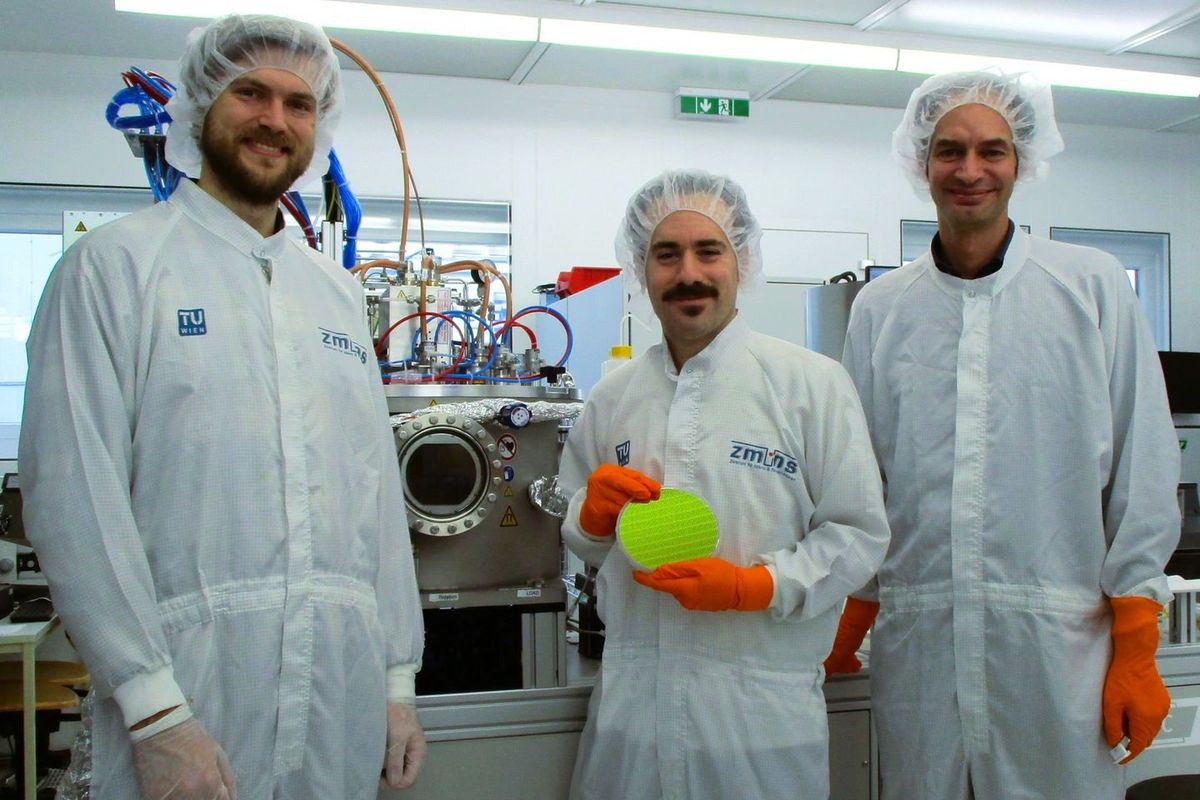This article is part of our exclusive IEEE Journal Watch series in partnership with IEEE Xplore.
In a development that could reshape electronic circuits and chip design, a research team at the Vienna University of Technology in Austria has introduced a new generation of intelligent, controllable transistors capable of flexible reprogramming at the hardware level. This innovation represents a departure from conventional semiconductor technology, providing both adaptability and efficiency in data processing.
The traditional approach to chip fabrication involves doping—a deliberate contamination of the semiconductor material with certain foreign atoms. When these atoms have one electron more than the atoms around them, then the additional electron can move within the material relatively easily. On the other hand, when they have one less electron, then surrounding electrons can move in. This in turn results in an electron missing elsewhere, creating what’s known as a “hole”—a place where an electron is missing—and that hole moves through the material.
Both moving electrons and moving holes play an important role in microelectronics. The doping determines where and in which direction current can flow and where it cannot. This means that the function of conventional transistors is fixed during manufacture and can no longer be changed. The current flow through the transistor is then switched on or off using a control electrode.
The transistors developed by the Vienna University of Technology group instead utilize something called electrostatic doping. This is a method that replaces the complex and costly process of chemical doping with electric fields. By controlling electron and hole transport in the material through electric fields, these transistors can be dynamically reconfigured to perform different tasks, eliminating the fixed functionalities of conventional transistors.
“It’s unlikely that RFETs will eliminate the need for normal transistors, but they could coexist.” —Lukas Wind, Vienna University of Technology
“Our reconfigurable transistors allow for reconfiguration at the fundamental switching units, rather than information routing to fixed functional units,” said Walter M. Weber, a professor at the Institute of Solid-State Electronics. “This means that the nature of our approach is highly promising for reconfigurable computing and AI applications.”
The research team first presented these intelligent, configurable transistors in 2021.The breakthrough now is that they have demonstrated that all basic logic circuits can be assembled using these reconfigurable transistors. In addition, these logic circuits can be converted into other circuits by reconfiguring the components. Weber says that the simple logic cells that they have made indicates that generic circuits can be fabricated, and their actual function can be defined post-fabrication.
“In our reconfigurable devices (with undoped semiconductor channels), we are adding additional electrodes, the so-called ‘program gate’ atop each metal-semiconductor junction to filter out the undesired charge carrier type,” wrote Lukas Wind, a PhD student at the Vienna University of Technology in an email response. “With the second electrode atop the semiconductor channel, the so-called ‘control gate,’ the current flow through the device is controlled to turn the transistor on and off (as in classical MOSFETs).”
Wind explains that the electrical field does not add heat to the transistor. However, adding additional gate electrodes to each transistor ultimately takes up space. “It most likely won’t be possible to make these reconfigurable field effect transistors (RFETs) as small as standard CMOS transistors,” Wind wrote. “As a result, I think it’s unlikely that RFETs will eliminate the need for normal transistors, but they could coexist and be used for certain applications or circuits which can greatly profit from their flexible reconfigurable properties for reducing transistor count, energy efficiency, or performance.”
While RFETs may not be as small as CMOS transistors, the reconfigurable nature of the transistors means that the total number of transistors is reduced while still maintaining the same functionality. This reduction in transistor count not only saves space on the chip but also contributes to lower power consumption and improved energy efficiency. For example, a single circuit can have multiple different functionalities just by switching the polarity of individual transistors or the entire circuit.
In the context of other work in reconfigurable devices where it has been used for neuromorphic computing, the latest device from the researchers does not require any new processes or materials, like perovskite. The new transistors use the mainstay materials of the semiconductor industry: silicon and germanium.. “Our approach is very similar to the approach used in classical transistor-based digital circuits and could therefore be implemented directly on the same chip and extend its functionality,” wrote Wind.
“Our approach is highly promising for reconfigurable computing and AI applications.” —Walter M. Weber, Vienna University of Technology
While challenges such as incorporating additional gate electrodes into transistors exist, the research team remains optimistic about the potential of their technology. “Next big steps would be the large-scale, industry-grade fabrication of RFET-based circuits,” wrote Wind.
The implications of this research extend beyond conventional chip design. Reconfigurable transistors open up possibilities for hardware security solutions, novel applications in analog circuits, and advancements in neuromorphic computing, enabling self-learning and adaptive systems, according to Wind.
The researchers published their findings in the February issue of IEEE Transactions on Electron Devices.
Dexter Johnson is a contributing editor at IEEE Spectrum, with a focus on nanotechnology.



